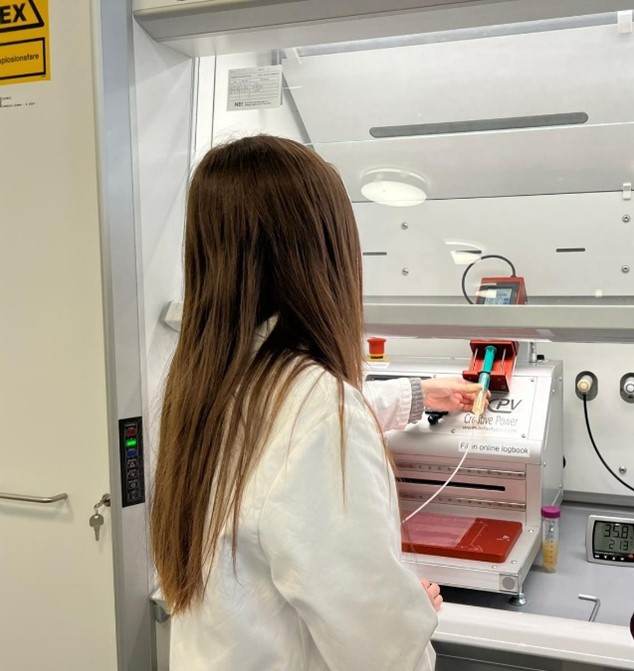What if, instead of taking a tablets or injections, you could just place a small, dissolvable film inside your cheek to take your medication? That’s what the BUCCAL-PEP project is working on. This in-cheek approach, also known as buccal delivery, is particularly helpful for elderly, children, and people who have difficulty swallowing. Our team member Eleftheria Pantazoglou, together with her colleagues at DTU, published first results of their research into optimising the BUCCAL-PEP film for in-cheek drug delivery.
Eleftheria Pantazoglou and her colleagues in Line Hagner Nielsen’s Pharmaceutical Technology group at DTU are exploring how to optimise the BUCCAL-PEP film. In their recent publication, they examined how these films behave when placed on a moist surface simulating the mouth. They studied how well the film sticks to the mouth surface, how it releases the drug, and how long it takes to break down after release of the drug.
As a PhD student in the lab of Line Hagner Nielsen at DTU, Eleftheria explains more about the publication: “This publication represents the first year of my PhD. My current focus is on fabricating films that are optimised for buccal delivery of peptides.” To do this, Eleftheria is exploring the role of a substance called glycerol in the films.
Finding the optimal concentrations
Eleftheria showed that increasing the glycerol levels in the films significantly enhanced the ability to stick to the simulated mouth surface. This characteristic is known as mucoadhesion. “For me, one of the most striking results was the comparison of mucoadhesion between the liquid and film formulations. Observing their distinct behaviours provided valuable insights into the mucoadhesive properties of the films, which is highly beneficial for the BUCCAL-PEP project,” Eleftheria explains.
Increased glycerol levels also improved the controlled release of the drug. Films without glycerol released the drug very fast, while those containing higher glycerol concentrations showed a slower, more sustained release over the same period. “We also observed that increasing the amount of glycerol led to faster permeation of the molecules through the tissue,” Eleftheria adds.
Moving forward
The results from Eleftheria and team provide valuable insights and experience to further advance our efforts in buccal drug delivery. Buccal film could be a promising option for targeted treatment. “Building on the insights from this publication, I continue to utilize slot-die coating for film production. The results of this publication confirmed the technique’s effectiveness, and given its scalability, it holds great potential for the project. Moving forward, I aim to refine this process further to meet the project’s objectives,” Eleftheria explains.
“I find it incredibly exciting to work with experts from diverse fields and learn about various aspects of designing, fabricating, and testing a drug delivery product. Being part of a European project as a PhD student is a truly unique experience, offering unparalleled learning opportunities and insights.” The final impact of the project is also very motivating to her: “It’s highly rewarding to work on a project that aims to improve patient compliance, as it has the potential to make a significant impact in healthcare.”
Curious to read the full publication? Check it out here:

Eleftheria Pantazoglou
Eleftheria is a PhD student at the Pharmaceutical Technology group of the Technical University of Denmark (DTU).

Eleftheria working at the lab











